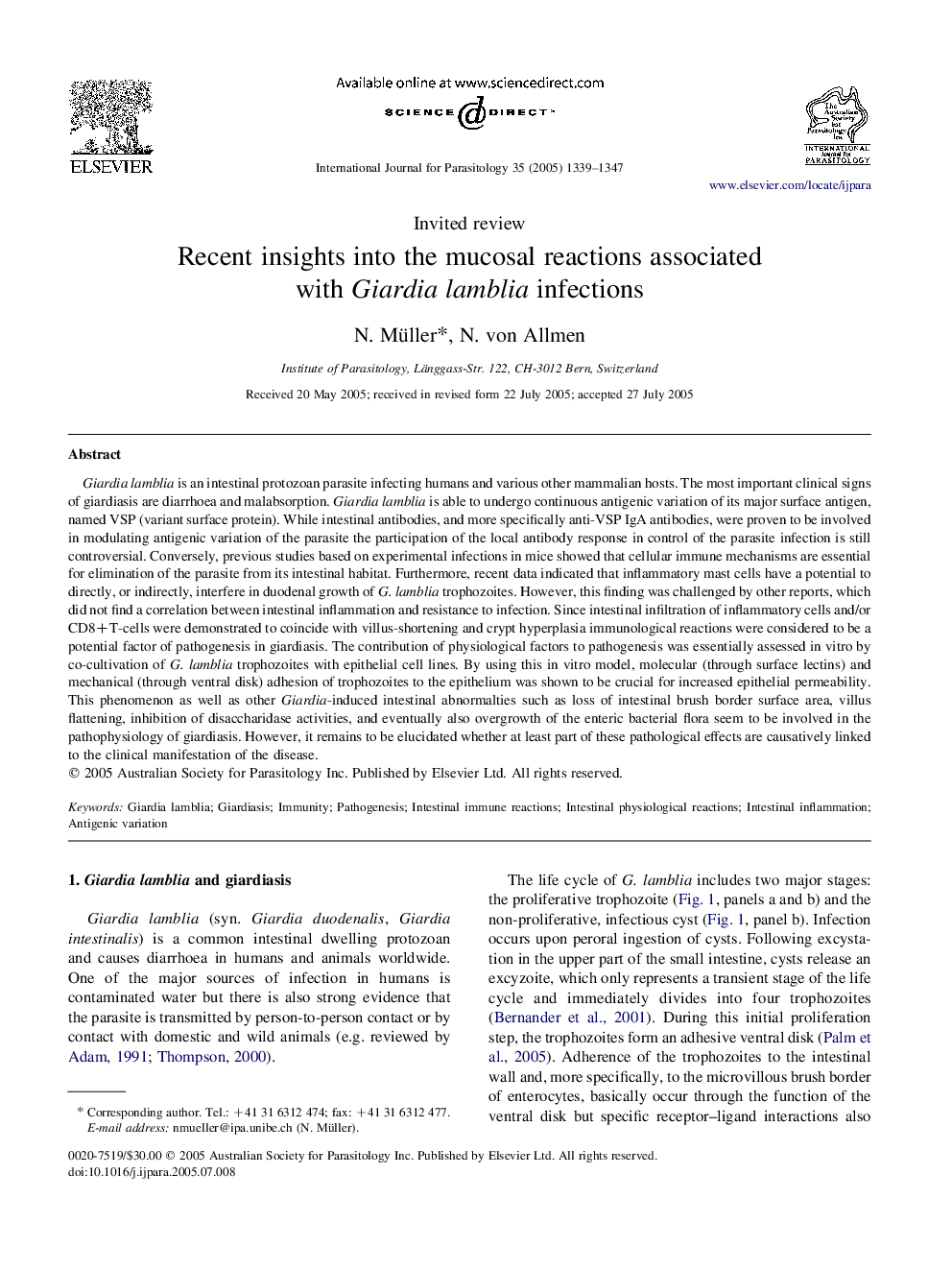| Article ID | Journal | Published Year | Pages | File Type |
|---|---|---|---|---|
| 8979678 | International Journal for Parasitology | 2005 | 9 Pages |
Abstract
Giardia lamblia is an intestinal protozoan parasite infecting humans and various other mammalian hosts. The most important clinical signs of giardiasis are diarrhoea and malabsorption. Giardia lamblia is able to undergo continuous antigenic variation of its major surface antigen, named VSP (variant surface protein). While intestinal antibodies, and more specifically anti-VSP IgA antibodies, were proven to be involved in modulating antigenic variation of the parasite the participation of the local antibody response in control of the parasite infection is still controversial. Conversely, previous studies based on experimental infections in mice showed that cellular immune mechanisms are essential for elimination of the parasite from its intestinal habitat. Furthermore, recent data indicated that inflammatory mast cells have a potential to directly, or indirectly, interfere in duodenal growth of G. lamblia trophozoites. However, this finding was challenged by other reports, which did not find a correlation between intestinal inflammation and resistance to infection. Since intestinal infiltration of inflammatory cells and/or CD8+T-cells were demonstrated to coincide with villus-shortening and crypt hyperplasia immunological reactions were considered to be a potential factor of pathogenesis in giardiasis. The contribution of physiological factors to pathogenesis was essentially assessed in vitro by co-cultivation of G. lamblia trophozoites with epithelial cell lines. By using this in vitro model, molecular (through surface lectins) and mechanical (through ventral disk) adhesion of trophozoites to the epithelium was shown to be crucial for increased epithelial permeability. This phenomenon as well as other Giardia-induced intestinal abnormalties such as loss of intestinal brush border surface area, villus flattening, inhibition of disaccharidase activities, and eventually also overgrowth of the enteric bacterial flora seem to be involved in the pathophysiology of giardiasis. However, it remains to be elucidated whether at least part of these pathological effects are causatively linked to the clinical manifestation of the disease.
Related Topics
Life Sciences
Immunology and Microbiology
Parasitology
Authors
N. Müller, N. von Allmen,
